A Visit to a Ghost Town: Whittier, AK (Pop. 223)
by Mairead Small Staid
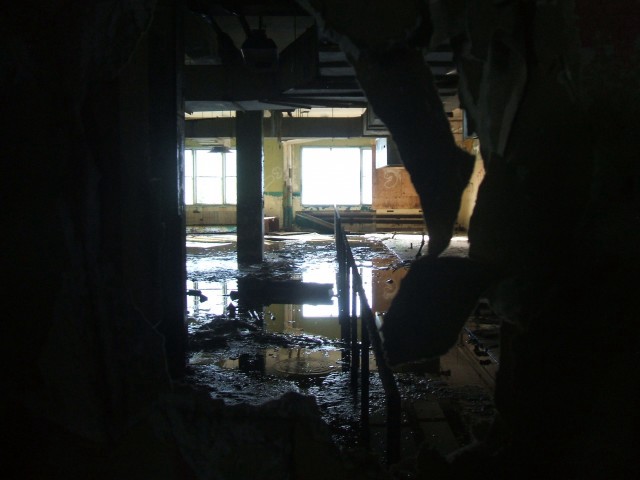
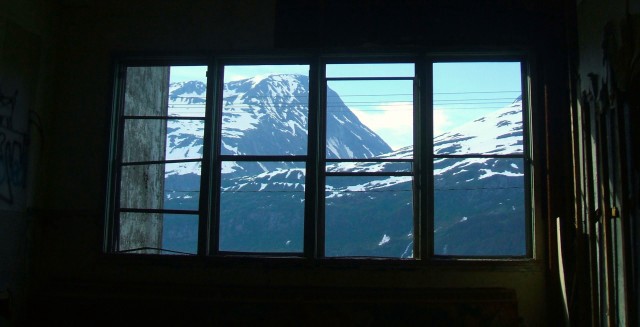
“Want to go to the creepiest town in the world?”
This is how I first hear about Whittier, a former military base and current port on Prince William Sound, just over an hour’s drive from Anchorage. Tim mentions it amid other options for the day’s adventure: a climb up Wolverine Peak, a drive to Talkeetna to visit a brewery. I’m all about hiking and drinking — and came to Alaska with precisely those low-rent ambitions — but a creepy town at the end of one of the country’s most scenic drives? Hell, yes. I can hike and drink anytime.
***
I had polished off a book of essays about the 49th state on the plane ride from Seattle. I felt a surge of recognition — half-guilty, half-thrilled — when I read a 1941 essay by newlywed Constance Helmericks: “We had no job waiting for us in Alaska, and just what we were going there for is hard to tell. Perhaps, because we had talked about it so much, we just had to get out of town.”
My two-week trip was hardly the same as homesteading in place of a honeymoon, but I recognized the need to do a thing simply because you’d said you would, because you wanted to be the kind of person who did such things, easily and often, without much fuss. I had been talking about Alaska for months and wanting to visit for years. When Alaska Airlines offered a sale, I had no excuses left.
In most other circumstances, I travel lightly. I’ve driven the breadth and height of the lower 48, from Boston to LA to Seattle and back, the last leg on my own. Denver and back. Detroit and back. I lived abroad for a year, and spent ten days riding European rails alone. But something about Alaska gave me pause. Something about the state seemed more wild, more isolated, than anywhere I’d been.
It’s possible I’d read too many books.
***
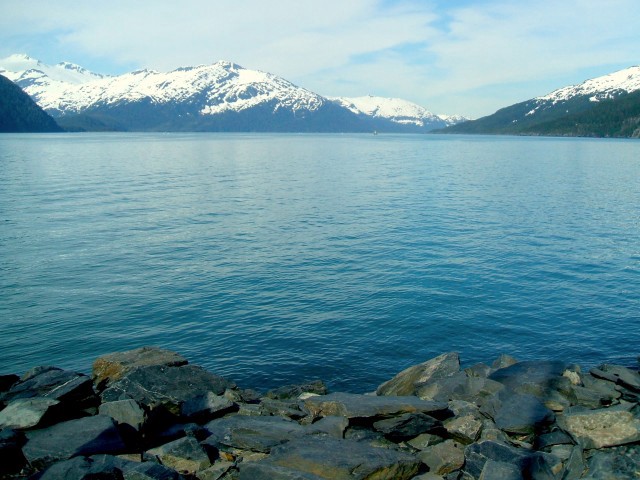
“Everybody should have an Alaskan sourdough uncle,” Helmericks writes, and Tim is mine. He’s been living in Alaska for the last four summers, waiting just enough tables to fund hiking, fishing, and hunting expeditions on his days off. He wants to move here year-round, a feat I can’t imagine. The cold doesn’t bother me, but the long nights? Anchorage averages just over five hours of light on January days. Hiking and camping become more complicated operations, and workers start and end their days in darkness.
I don’t glimpse that darkness once during my Alaskan fortnight. It is June: the sun technically sets between eleven and midnight but never truly relinquishes the sky. Night is merely four hours of twilight, easy to stay awake through, and each day is impossibly long. I’ve hit Alaska in the middle of a heat wave — the temperature rests in the 70s — and will go home burned from the nonstop sun.
The sun is near its peak when we leave for Whittier, and the drive southeast along the Seward Highway is the kind of beautiful that shuts you up, a kind hand to the back and a murmured shhh. Tidal flats give way to glittering water, and the mountains across the inlet frame the waves like a painted backdrop. This is the Alaska of dreams and tourist brochures. We stop to walk on a gray beach and climb rocks, and a train rattles along the mountains behind us, bringing sightseers from Anchorage back to their cruise ship.
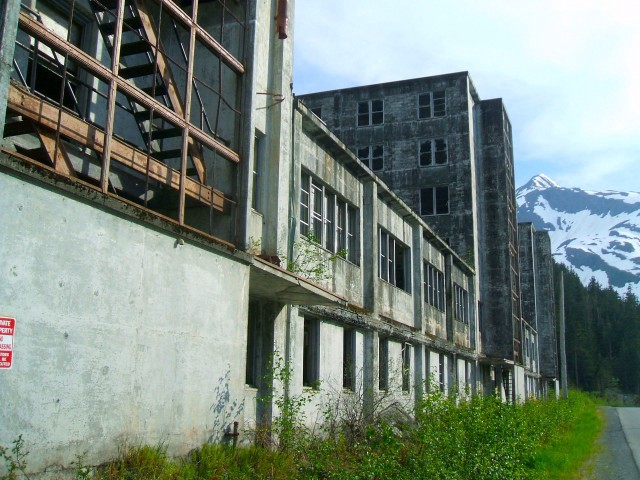
Whittier is ringed in by mountains and water. Boat and train were the only ways to reach the town until 2000, when the Whittier Access Project turned the train tunnel through the mountains into the state’s first toll road. We pay twelve dollars and join a line of cars waiting to enter the mountain. The tunnel is just wide enough for one lane of cars, or a single train, so passage through is strictly moderated. You can only enter Whittier by car during a fifteen-minute window within each hour; you can only leave during another such gap. If you miss the day’s last exodus, you’re stuck in Whittier (pop. 223) overnight.
Our ten-minute drive through the dimly lit tunnel resembles the Mine of Lost Souls ride at Canobie Lake Park; water drips from the craggy roof of rock above us. Tim says that every time he’s visited, no matter how brightly the sun shines on the western side of the mountains, clouds shroud Whittier itself. Our visit breaks that streak, and we leave the tunnel like small mammals emerging from hibernation, blinking back the sudden brightness. The mountains are just as spectacular on this side, the water tinged turquoise from the many glaciers nearby.
Whittier had an emergency capacity of 30,000 in the mid-1950s, but the population never surpassed 1200. The place was “inactivated” as a military port in 1960 and incorporated in 1969 with a population just under 70. This strange town is a microcosm of Alaska itself: too much room, too few people. Alaska has the largest budget surplus of any state, Tim tells me, as so many natural resources bring in more money than the government can spend. In Whittier, the population hoped the new toll road might bring more visitors and industry to the town, but that hasn’t been the case. We have to halt our drive through town to let a flock of tourists cross the road, but they’re only going from the train station on one side of the road to the port (and their cruise ship) on the other. Most people don’t stop to sightsee in Whittier.
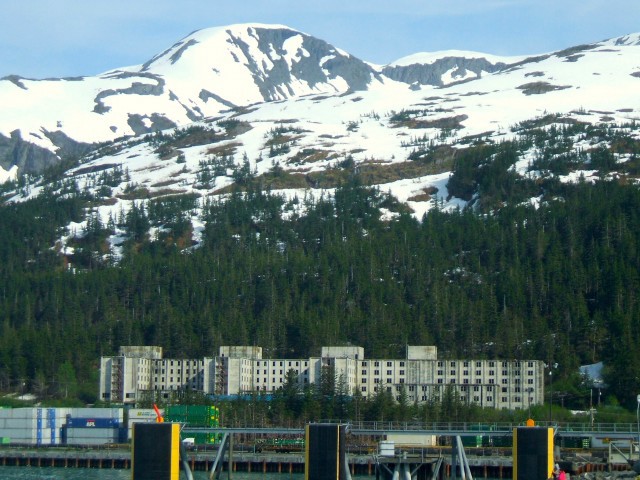
Present company excluded, of course. We’re here to visit a gray monstrosity of a building presently marring the landscape. The Buckner Building was built between 1949 and 1954 to house troops stationed in Whittier in the aftermath of World War II and the rise of conflict in Korea. Pitched as “a city under one roof,” the 525-foot long structure cost six million dollars to build. A 350-seat theater took up most of the basement, and other amenities included a rifle range, bowling alley, barbershop, officer’s club, cafeteria, small hospital and six-cell jail.
To this writer, who hates sharing a building with even one other apartment, the Buckner Building sounds like hell. The thought of rogue soldiers held in cells just below my bedroom, whole months without stepping outside, and the impossibility of avoiding (escaping, I can’t help but think) other people — I don’t find the Buckner’s present state much more hair-raising than its past.
The Buckner was abandoned along with the rest of the town in the early 1960’s. “Everything in the building that can be broken has been, including water systems, walls, and fixtures,” reads an entry in the two-room Prince William Sound Museum. “Every one of the hundreds of windows has been broken out.” When Tim had described the massive, abandoned building, I’d imagined a larger version of my high school “cage,” a dirt-floored, semi-lit addendum to the gym where we held softball practice when it was raining or snowing. But the Buckner Building is claustrophobic rather than cavernous, shadowy despite those broken windows. Tim hands me a headlamp before we go in.
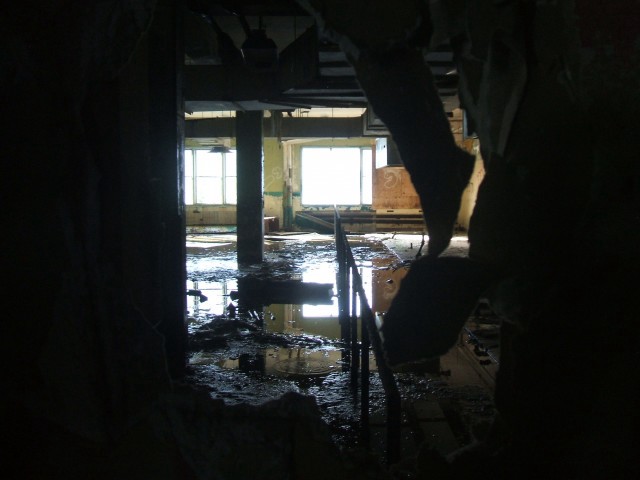
The cement stairwells joining each floor are the darkest parts of the building, and only our lamps illuminate the dusty piles of beer cans in their corners. We walk gingerly through debris and pooling water on each floor, exploring the small, boxy rooms that must have been sleeping quarters. Stall doors slant off their hinges in a pitch-black bathroom. We don’t look behind them. I’m relieved that we never find the six-cell jail, easy as it already is to imagine being trapped in this gloom, this silence.
A healthy layer of algae is thriving on the top floor of the Buckner Building. We pick our way around it and climb through a gaping window frame to stand on the rickety fire escape clambering down the back side of the building. Air and light, at last. My heightened sense of fear retreats back into the building it came from. I look past the rusted railing of the fire escape to the shining sea and mountains majesty beyond. The stark contrast strikes me as a particularly Alaskan juxtaposition: stunning natural beauty tinged with a stark reminder of uncompromising darkness. Alaska is thrilling, sunlit, and unreal. Alaska is deeply troubled.
Constance Helmericks concluded her 1941 essay with this line: “The way I thought about Alaska, why–I thought it would be nice to take the roses without the thorns. But Alaska wasn’t like that, isn’t like that yet.” In 2013, it still isn’t. But let me tell you, those roses are the prettiest you’ve ever seen.
When we return to the car, Tim slips a handgun out of his waistband and replaces it under the seat. Bears have been seen in the Buckner before, he says, but mostly he brought it in case of vagrants.
Mairead Small Staid is an MFA candidate at the University of Michigan and a 2013 Ruth Lilly Poetry Fellowship finalist.